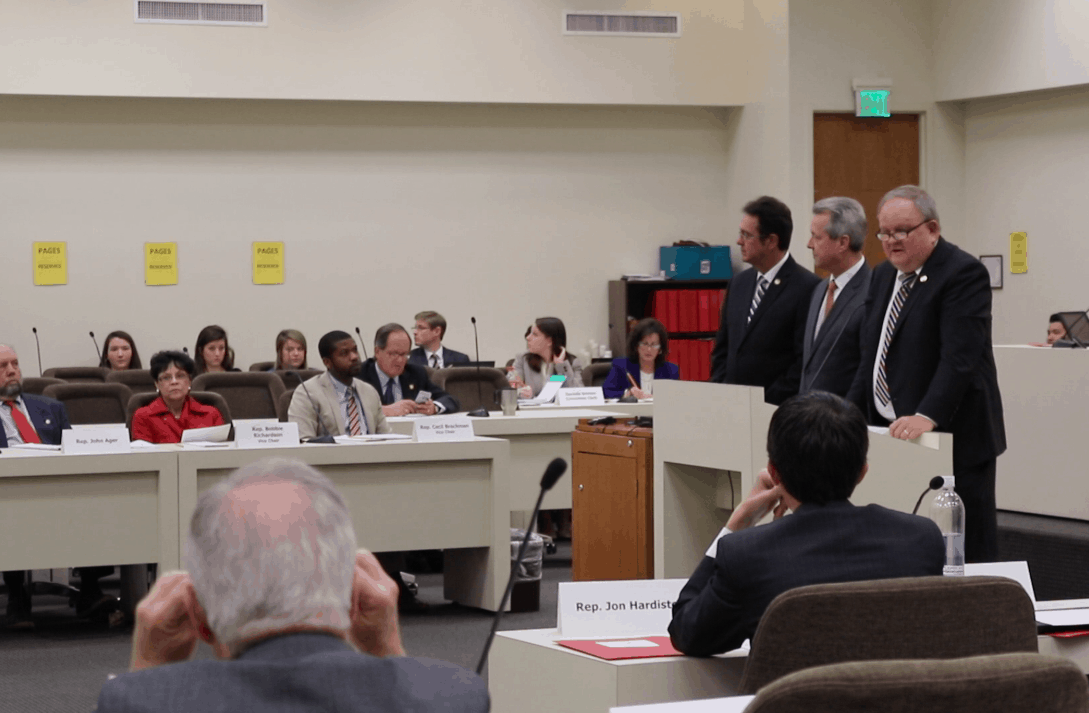The House K-12 education committee gave an unanimously favorable report Tuesday to a bill that gives flexibility to local school districts on K-3 class size restrictions. Scroll to the end of this article to watch the full meeting.
The bill has the same text of the one that was filed in the General Assembly’s December special session but is now called House Bill 13. It aims to solve staffing problems created by the legislature’s attempt to reduce class sizes.
Rep. Chuck McGrady, R-Henderson, primary sponsor of the bill, presented the measure to the committee, calling it “a fix for a well-meaning mandate to reduce class sizes in the primary grades.”
The 2016-17 short session budget required the following teacher-to-student ratios, which were supposed to become effective in the 2017-18 school year:
Kindergarten: one teacher per 18 students
First grade: one teacher per 16 students
Second grade: one teacher per 17 students
Third grade: one teacher per 17 students
But the strict limits left many schools needing more teachers and classrooms for smaller classes and wondering how they would pay for teachers for non-academic subjects like art, music, and physical education. Usually, school districts are allowed to maintain an average classroom size that is higher than the funded allotment. Districts traditionally use the excess funding in the classroom-teacher allotment from the state to hire “program enhancement teachers,” who typically teach non-core classes.
The bill — supported by Democrats and Republicans alike — allows school districts’ average classroom size to exceed the funded allotment ratio by three students. The maximum individual class size, if the bill becomes law, could exceed the funded allotment ratio by six students.
McGrady shared that in his district, in Henderson County, the class size change means schools would need 48 additional teachers and 21 mobile units, costing over $3 million.
The legislature’s fiscal staff said this “plus three, plus three” technique is what has been used for a while now and is recommended by the State Board of Education. “Plus three, plus three” means the average classroom size can be three students higher than the funded allotment, and the maximum individual class size can be three students higher than that.
Some committee members expressed concern that supporting this bill would be seen as an attempt to increase class sizes or that the issue would be overly politicized by news outlets. Rep. Frank Iler, R-Brunswick, said he wanted to ensure the public that he supports smaller class sizes.
“I’ve been told, outside this complex, that this amounts to an increase in class sizes and will be dictated that way in the upcoming elections — that we increased class sizes” Iler said. “However, I see by the chart that we’re actually decreasing class sizes…so I’m going to support the bill, but I want it clear that we’re not for bigger classes. We’re for smaller classes as indicated in the last budget.”
This is the first bill the committee has heard, and many members expressed urgency to move it along quickly — and to keep politics out of the conversation. McGrady said districts need the flexibility before they have to construct their budgets for the following year.
“The key is going to be trying to move this bill as quickly as possible so that boards of education and county commissioners who are setting their budgets very soon can factor in the change here,” McGrady said.



